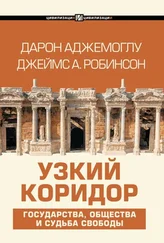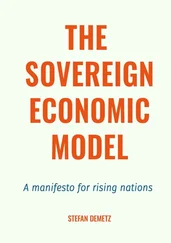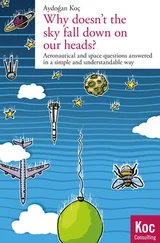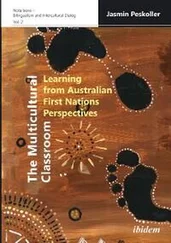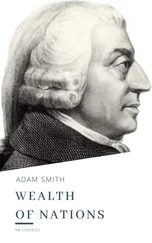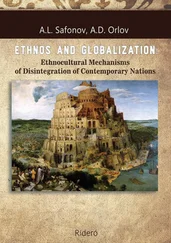These tendencies do not imply that extractive economic and political institutions are inconsistent with economic growth. On the contrary, every elite would, all else being equal, like to encourage as much growth as possible in order to have more to extract. Extractive institutions that have achieved at least a minimal degree of political centralization are often able to generate some amount of growth. What is crucial, however, is that growth under extractive institutions will not be sustained, for two key reasons. First, sustained economic growth requires innovation, and innovation cannot be decoupled from creative destruction, which replaces the old with the new in the economic realm and also destabilizes established power relations in politics. Because elites dominating extractive institutions fear creative destruction, they will resist it, and any growth that germinates under extractive institutions will be ultimately short lived. Second, the ability of those who dominate extractive institutions to benefit greatly at the expense of the rest of society implies that political power under extractive institutions is highly coveted, making many groups and individuals fight to obtain it. As a consequence, there will be powerful forces pushing societies under extractive institutions toward political instability.
The synergies between extractive economic and political institutions create a vicious circle, where extractive institutions, once in place, tend to persist. Similarly, there is a virtuous circle associated with inclusive economic and political institutions. But neither the vicious nor the virtuous circle is absolute. In fact, some nations live under inclusive institutions today because, though extractive institutions have been the norm in history, some societies have been able to break the mold and transition toward inclusive institutions. Our explanation for these transitions is historical, but not historically predetermined. Major institutional change, the requisite for major economic change, takes place as a result of the interaction between existing institutions and critical junctures. Critical junctures are major events that disrupt the existing political and economic balance in one or many societies, such as the Black Death, which killed possibly as much as half the population of most areas in Europe during the fourteenth century; the opening of Atlantic trade routes, which created enormous profit opportunities for many in Western Europe; and the Industrial Revolution, which offered the potential for rapid but also disruptive changes in the structure of economies around the world.
Existing institutional differences among societies themselves are a result of past institutional changes. Why does the path of institutional change differ across societies? The answer to this question lies in institutional drift. In the same way that the genes of two isolated populations of organisms will drift apart slowly because of random mutations in the so-called process of evolutionary or genetic drift, two otherwise similar societies will also drift apart institutionally—albeit, again, slowly. Conflict over income and power, and indirectly over institutions, is a constant in all societies. This conflict often has a contingent outcome, even if the playing field over which it transpires is not level. The outcome of this conflict leads to institutional drift. But this is not necessarily a cumulative process. It does not imply that the small differences that emerge at some point will necessarily become larger over time. On the contrary, as our discussion of Roman Britain in chapter 6 illustrates, small differences open up, and then disappear, and then reappear again. However, when a critical juncture arrives, these small differences that have emerged as a result of institutional drift may be the small differences that matter in leading otherwise quite similar societies to diverge radically.
We saw in chapters 7 and 8 that despite the many similarities between England, France, and Spain, the critical juncture of the Atlantic trade had the most transformative impact on England because of such small differences—the fact that because of developments during the fifteenth and sixteenth centuries, the English Crown could not control all overseas trade, as this trade was mostly under Crown monopoly in France and Spain. As a result, in France and Spain, it was the monarchy and the groups allied with it who were the main beneficiaries of the large profits created by Atlantic trade and colonial expansion, while in England it was groups strongly opposed to the monarchy who gained from economic opportunities thrown open by this critical juncture. Though institutional drift leads to small differences, its interplay with critical junctures leads to institutional divergence, and thus this divergence then creates the now more major institutional differences that the next critical juncture will affect.
History is key, since it is historical processes that, via institutional drift, create the differences that may become consequential during critical junctures. Critical junctures themselves are historical turning points. And the vicious and virtuous circles imply that we have to study history to understand the nature of institutional differences that have been historically structured. Yet our theory does not imply historical determinism—or any other kind of determinism. It is for this reason that the answer to the question we started with in this chapter is no: there was no historical necessity that Peru end up so much poorer than Western Europe or the United States.
To start with, in contrast with the geography and culture hypotheses, Peru is not condemned to poverty because of its geography or culture. In our theory, Peru is so much poorer than Western Europe and the United States today because of its institutions, and to understand the reasons for this, we need to understand the historical process of institutional development in Peru. As we saw in the second chapter, five hundred years ago the Inca Empire, which occupied contemporary Peru, was richer, more technologically sophisticated, and more politically centralized than the smaller polities occupying North America. The turning point was the way in which this area was colonized and how this contrasted with the colonization of North America. This resulted not from a historically predetermined process but as the contingent outcome of several pivotal institutional developments during critical junctures. At least three factors could have changed this trajectory and led to very different long-run patterns.
First, institutional differences within the Americas during the fifteenth century shaped how these areas were colonized. North America followed a different institutional trajectory than Peru because it was sparsely settled before colonization and attracted European settlers who then successfully rose up against the elite whom entities such as the Virginia Company and the English Crown had tried to create. In contrast, Spanish conquistadors found a centralized, extractive state in Peru they could take over and a large population they could put to work in mines and plantations. There was also nothing geographically predetermined about the lay of the land within the Americas at the time the Europeans arrived. In the same way that the emergence of a centralized state led by King Shyaam among the Bushong was a result of a major institutional innovation, or perhaps even of political revolution, as we saw in chapter 5, the Inca civilization in Peru and the large populations in this area resulted from major institutional innovations. These could instead have taken place in North America, in places such as the Mississippi Valley or even the northeastern United States. Had this been the case, Europeans might have encountered empty lands in the Andes and centralized states in North America, and the roles of Peru and the United States could have been reversed. Europeans would then have settled in areas around Peru, and the conflict between the majority of settlers and the elite could have led to the creation of inclusive institutions there instead of in North America. The subsequent paths of economic development would then likely have been different.
Читать дальше


